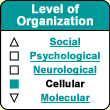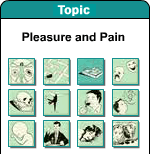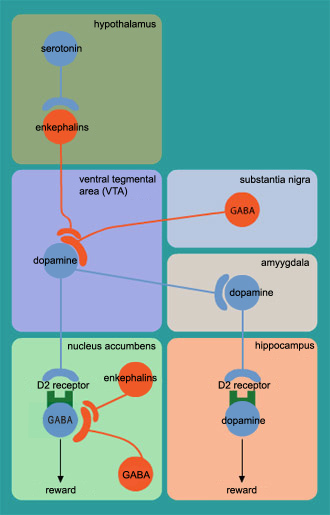It
is inside this bundle that the nerve fibres of the reward
circuit are located. The reward circuit is a sub-structure
of the MFB, composed of the axons of the dopaminergic neurons
that project from the VTA to the nucleus accumbens.
The reward circuit (or MFB) also contains other connections
(see diagram). Thus, the neurons of the VTA also connect
to those of the amygdala,
the septum, and the prefrontal cortex. The VTA’s
connections to the prefrontal cortex show how the most
primitive parts of the brain can still have a preponderant
influence on our
behaviours. Which can leave the neocortex with the
embarrassing task of having to justify our behaviour in
words! |





